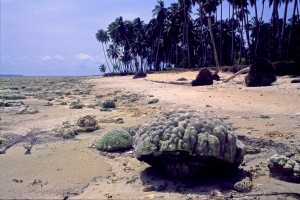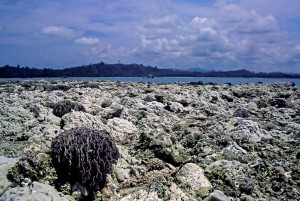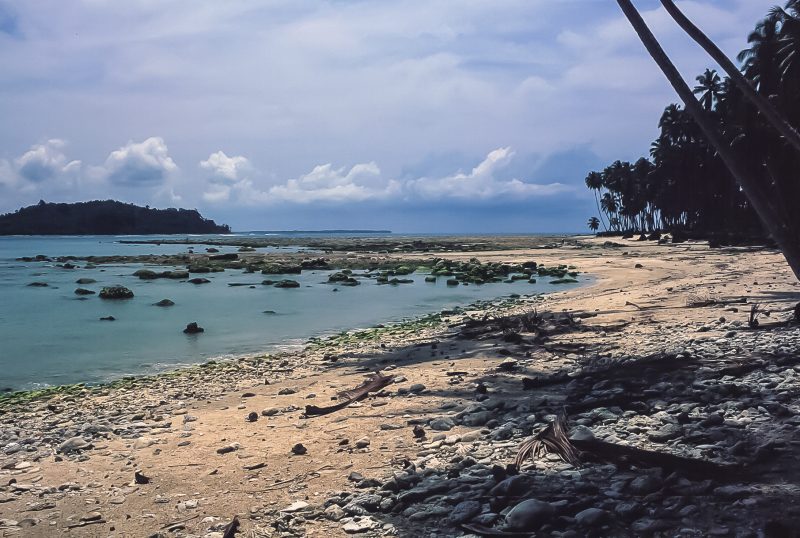26 December, 2004, 10 years ago this Boxing Day, was a day of unbelievable violence, when nature decided to wake up with an unforgettable result. That day, a giant earthquake struck the world, Indonesia and Thailand being the worst hit areas. That day will be remembered for a long time in Simeulue Island, North Sumatra, the nearest point to the epicentre.
After that day, even geography changed; the beach of Simeulue moved away. Everything that before was underwater, in a coral reef teaming with life and colour, was left drying on the surface after only a few minutes, when the earth started moving. Corals, sponges, crabs, and snails were left out of the water forever. The magnitude 9.2 earthquake lifted the seafloor by about two metres as a result of the enormous energy released.
That event changed the life of many of the island’s inhabitants. Many of them moved away after the earthquake and the terrible tsunami waves – which were 30 metres in height – hit the island and wiped out houses, boats, farms, and fields.
In these islands, there were incredibly very few human victims. I remember people from the village of Langi, in the North of Simeulue, telling me about the primordial terror brought down on them during seven minutes of earth tremors so violent that they could not remain on their feet, while witnessing how the sea was sliding away, and the corals going up for thousands of metres of coast. Tradition and histories handed down from the village elders saved many lives that day. When the sea moves away, “Smong, the deadly wave, is coming,” they said.
Tales were told about an old earthquake, where the sea retracted, followed by a giant wave that destroyed the village in the early 900s. On that day in December in 2004, the escape from the village to the surrounding hills saved hundreds of people; the tsunami wave on Simeulue killed only six. The close ties that Simeulue’s people have with nature made the difference compared with other regions, like Banda Aceh, where the wave killed thousands. In the small town of Lhoknga, Aceh Besar, the human population dwindled from 7,500 to 400 in a few minutes.
I haven’t been back to those areas since, but the feeling of walking on uplifted corals, like a petrified forest, watching crabs and other animals dead and dried, waiting for the never-arriving high tide is still engraved in my memory.
I was there three months after the big event, after the humanitarian aids machine finished dealing with the immediate emergency and had enrolled in a scientific expedition organized to assess the impact of the disaster on the North Sumatra coral reefs, in particular close to the earthquake epicentre. Onboard the expedition boat were specialists in different fields of coral biology, from invertebrate experts to fish ecologists, from Europe and Asia. We were witnesses of a historic event, and the first divers on the submerged reefs off Simeulue Island after the catastrophe. We were probably also the first-ever people diving there, as 10 years ago scuba diving was not as popular as it is now, and that island was pretty remote, frequented only by local villagers and a few pioneer surfers.
In some areas of Simeulue, the most exposed to the ocean waves, and where coastal mangrove forests were intact, the effect of the tsunami wave on the deep reef was almost insignificant; the fury of the Indian Ocean during heavy storms can be pretty challenging for coral reefs, so a couple of tsunami waves was not such a big issue and just broke some big table corals in the shallower part of the reef. The tsunami did not have any major effect on an environment already well adapted to a high-energy hydrodynamic situation. The ecosystem was still healthy, with corals adapted to strong waves, which now make that island a favourite among surfers. Fish diversity – my specialty and reason of my participation in the expedition – were in very good condition. I remember abundant and diversified butterfly fish, a very good indicator of the health of the corals in that area, and I found myself thinking that, from a fish point of view, a tsunami is only a (very) big wave; nothing to be too worried about.
The situation was very different in other areas, closer to the epicentre; especially where mangroves were cleared to make space for shrimp farms, and paddy fields replaced coastal forests. Siltation caused by the returning wave – bringing sediment from the unprotected coast – suffocated the few corals that remained underwater. The backwash of the water created an unusually high water turbidity, and the sedimentation of the particles settled on the corals with a knock-on effect on the whole ecosystem. Surgeonfish and Parrotfish, which feed on algae and were still able to find food in this devastated environment, were prevalent and the biodiversity very low. The majority of fish were juveniles, as the adults were washed out or simply went away.
Like many coastal villages in Indonesia, even Simeulue relied heavily on fishing (even too heavily nowadays, as overfishing is a dramatic reality in Indonesia). Coral reefs play a very important role in guaranteeing to those people an adequate provision of proteins in their diet. If they are smart – like apparently Simeulue people were, seeing the pristine conditions of the emerged coral reefs – without using bombs or other destructive methods, they were able to guarantee a sustained use of the available resources coming from the sea.
10 years after the tsunami, memories are still vivid. We don’t know when nature will decide to wake up again, but it will happen again for sure, as we are on the Ring of Fire. But now we know that we can limit the damage, preserving our environment means to save ourselves.
Simeulue today
After that catastrophic event, Simeulue has recovered and now the first tourists, mainly surfers but also people looking for quiet and a sight of the old Indonesia, have started coming to the island. Don’t expect many restaurants or attractions out of the sea and nature. Locals are still conservative but friendly with foreigners.
FAST FACTS
PROVINCE: Simeulue Regency
LAND SIZE: 2,051 km2
POPULATION: 80,674 (2010)
HOW TO GET THERE: Susiair (http://fly.susiair.com/) offers a daily connection from/to Medan, in North Sumatra. There is one airport in the south of the island (Sinabang), and the daily connection with Medan is reliable enough.
WHAT TO DO: Surfing, diving, snorkelling, relaxing.
WHAT TO BRING: All that you may need in a remote island.
WHERE TO STAY: Very few surf resorts are available right now. A quick look on tripadvisor will show you all the possibilities.




